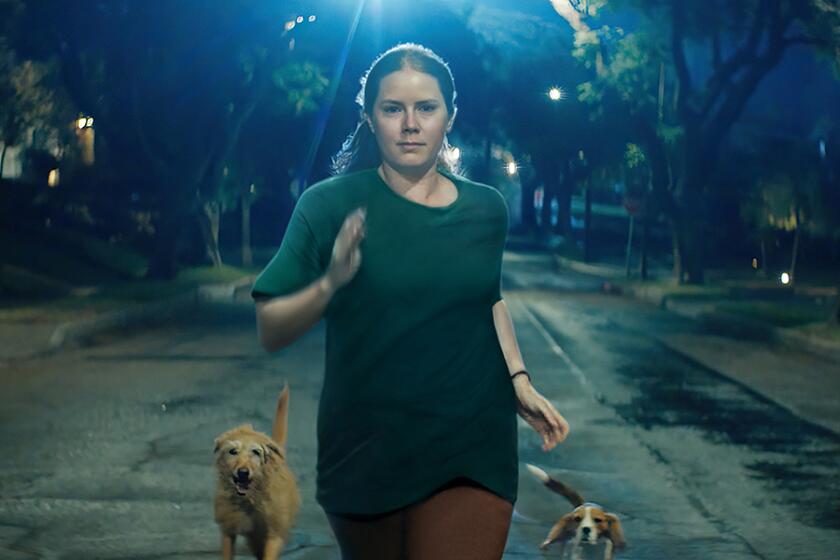What ‘Lola’ gets is a restoration
Max Ophuls’ 1955 “Lola Montes” revolves around the life and many loves of a beautiful courtesan and dancer, now destitute, who is forced to relive her exploits nightly at a low-rent circus in America. The poignant final scene finds Lola sitting in a cage like one of the circus animals as men from the audience pay $1 to touch her hand.
The film has been treated as shabbily as its heroine.
Ophuls’ (“Le Plaisir,” “La Ronde”) first film in color and in CinemaScope, “Lola Montes” was supposed to be France’s answer to Hollywood’s wide-screen spectacle. It starred popular French actress Martine Carol -- who was known primarily for light, frivolous films -- British actor Peter Ustinov as the circus’ ringleader, and Austrian actors Anton Walbrook and Oskar Werner.
But instead of giving Hollywood a run for its money, “Lola Montes” was a resounding failure. Over the next two years, it was shortened and re-edited two times in hopes of attracting audiences.
The final edit in 1957 was done without Ophuls’ permission. Ophuls’ original vision told Lola’s story in a series of sophisticated flashbacks that take place during one of her performances. This last version reconstructed the film chronologically and employed a voice-over.
Now “Lola Montes” has been restored to Ophuls’ exquisite intention thanks to the Cinematheque Francaise; Laurence Braunberger, who owns the rights to the film; the Thomson Foundation; and the Franco-American Cultural Fund.
The newly restored film was unveiled at the Cannes Film Festival and opens here Friday at the Royal Theatre in West Los Angeles and the Playhouse 7 in Pasadena.
Tom Burton, vice president of Technicolor Creative Services in Burbank, which brought “Lola Montes” back to vibrant life, says that the initial response to the movie happened because “the public and the critics had been built up to see a rollicking sex romp about this notorious character. But instead, the portrait Max painted was a somewhat dark, introspective view of a woman in decline. It just didn’t sit very well.”
Serge Toubiana, the general director of the Cinematheque Francaise, believes the structure may have been too progressive for 1955 moviegoers.
“It is a journey of this woman,” says Toubiana. “It is a very modern version of the society of entertainment.”
The filmmaker’s son, Oscar-winning documentarian Marcel Ophuls (“The Sorrow and the Pity”), maintains the film’s failure contributed to his father’s unexpected death in 1957 at age 54.
“It was very important and emotional for him to do this restoration,” says Braunberger. “Because his father was so sad at the reception and what the distributor and producer did to the movie.”
This new restoration began nearly two years ago using the original camera negative, which, according to Burton, was generally in good condition. There were also monochromatic selections -- a format used to preserve color film negatives that Pierre Braunberger (a producer and the father of Laurence) had used -- but they were in poor shape due to shrinkage and scratches. Burton used a rough cut found at the Cinematheque de la Ville de Luxembourg and a complete exhibition print of the original discovered at the Cinematheque Royale de Belgique.
--
More to Read
Only good movies
Get the Indie Focus newsletter, Mark Olsen's weekly guide to the world of cinema.
You may occasionally receive promotional content from the Los Angeles Times.









